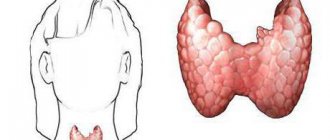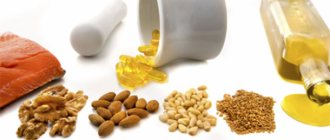Palm oil is a product obtained from the fruits of the oil palm.
Fat must be present in the human diet, and vegetable oils, including palm oil, are used in the food industry.
Palmitic acid is a saturated fatty acid and the main component of refined palm oil. Over the past few decades, research has shown that palm oil is harmful due to excess palmitic acid.1
Palm oil is one of the cheapest and most popular oils in the world. It accounts for a third of global vegetable oil production.
In the article we provide comprehensive information about the role of palm oil and palmitic acid in the development of obesity, cardiovascular diseases, diseases of the nervous system and bones.
Types of palm oil
The product is extracted from two types of oil palm fruits: one that grows in Africa and the other in South America.
Palm oil is:
- technical _ It is extracted from the pulp of the fruit to make soap, cosmetics, candles, biofuels and lubricants, and to process and coat metal plates;
- food _ It is extracted from the seeds to produce food products: margarine, ice cream, chocolate products, cookies and bread, as well as pharmaceuticals. The high refractoriness of fat allows it to be used as a lubricant in many units and technical equipment.
Palm oil from the pulp should not be confused with oil from the seeds. The seed oil is high in saturated fat, making it suitable for cooking.
Transparency or white color of palm oil indicates processing. This means that such oil is devoid of most nutritional properties.
Composition and calorie content of palm oil
Palm oil contains many saturated fats, vitamins and antioxidants:
- fatty acids – 50% saturated, 40% monounsaturated and 10% polyunsaturated.2 Palmitic acid – the main component of the purified product;3
- vitamin E – 80% of the daily requirement. Antioxidant that protects cells from damage;4
- carotene – responsible for color. The level of carotene in palm oil is 15 times higher than that of carrots and 300 times higher than that of tomatoes;
- coenzyme Q10 . Has anti-inflammatory and choleretic effects;
- flavonoids . Antioxidants that bind free radicals.
Caloric content of palm oil is 884 kcal per 100 g.
Harm to the cardiovascular system
The paradox of using hydrogenated palm oil is that it was once considered a healthy alternative to animal fats. The main danger of animal fats is cholesterol, which could accumulate on the walls of blood vessels and provoke the development of atherosclerosis (sticking and blocking of arteries). As you know, vegetable oils do not contain cholesterol at all, so the opinion has been mistakenly established that vegetable fat will always be healthier than animal fat. Hydrogenated (modified) fat seemed healthier than lard or butter, and it actually had no cholesterol.
However, his danger lay elsewhere. The way hydrogenated palm oil fatty acid molecules behave in the human body has been a sad discovery.
The modified product affects the functioning of cells throughout the body, causing them to work in a pathological mode.
In addition, with excessive consumption of palm oil, palmitic acid can increase the level of “bad” cholesterol in the blood, which is a risk for the cardiovascular system. Consumption of the product doubles the risk of developing heart disease and increases the likelihood of dying from sudden cardiac arrest. Trans fats in palm oil can increase the viscosity and fluidity of blood, disrupt heart rhythm, provoke coronary heart disease, and as a result, stroke and heart attack.
Benefits of palm oil
The benefits of palm oil are that it enhances immune function and promotes healthy bones, eyes, lungs, skin and liver. Palm oil helps provide energy to the body and improve the absorption of fat-soluble nutrients such as vitamins A, D and E.5
For the bones
Vitamin E deficiency is dangerous in old age - people break bones when they fall. Consuming palm oil, which contains vitamin E, compensates for its deficiency.6
For the heart and blood vessels
A study was conducted on 88 people to determine the effects of palm oil on the cardiovascular system. The results revealed that partial replacement of vegetable oil with palm oil in cooking does not affect the health of the heart and blood vessels in healthy young people.7
Tocotrienols found in palm oil help support heart function and protect against heart disease.
On a tropical needle
Palm oil has been used in the food industry since Soviet times - for example, in the icing of eclair cakes. But the palm boom came during the 1998 crisis: cheap food for impoverished Russians began to be massively prepared on the palm tree. “If in 1997 100 tons of palm trees were imported into Russia, then a year later - 390 tons,” the Federal Customs Service explained to AiF.
By the end of the 2000s. the problem worsened to the limit: manufacturers did not hesitate to make milk without milk, without indicating this on the labels. “There was a real battle in the industry,” recalls Larisa Abdullaeva, executive secretary of the Russian Dairy Union . “The 2008 technical regulation for dairy products, for example, was lobbied in such a way that it allowed palm products to be called by terms close to dairy (cheese, sour cream, etc.).” It was only forbidden to fool consumers in 2012, by legalizing the concepts of “dairy-vegetable” (more than 50% milk) and “vegetable-dairy” (less than 50% milk) products.
However, this was clearly not enough. Shadow business has long climbed onto the “palm tree” and has no intention of getting off it: the artisanal replacement of milk fat with vegetable fat produces super-profits. “Palm oil helps make a phenomenally cheap product: it costs about $570 per ton - five times less than milk fat ($2900),” says Roman Gaidashov, an independent food quality expert . By passing off cottage cheese or butter as high-quality dairy, but adding from 60 to 100% palm substitute, the manufacturer turns into a millionaire in six months. It’s not for nothing that they say in Asia: having an oil palm plantation is more profitable than an oil well.
Harm and contraindications of palm oil
Contraindications:
- gastritis and ulcers during exacerbation;
- obesity - a study in obese men showed that adding 20 grams daily. oils slow down the breakdown of fats.
When you consume a lot of oil, your skin may turn yellow due to carotene. This also has advantages - the skin becomes protected from harmful ultraviolet rays.13
Scientists have doubts about the heat treatment of oil. The researchers conducted an experiment on rats - they fed one group of rats food with palm oil, which was heated 10 times. Six months later, the rodents developed arterial plaque and other signs of heart disease. Another group of rats were fed fresh palm oil and remained healthy. The use of reheated oil is a cause of atherosclerosis and heart disease.14
Harm of palm oil to human health
Home / Dangerous Food / Harm of palm oil to human health /
If you look at the ingredients in foods purchased at a regular grocery store, you can see palm oil almost everywhere. It can be seen in condensed milk, candies, cookies, French fries, chocolate spread, chocolate, instant noodles, chips, croutons, and crackers. It seems that palm oil adds a special note and a certain taste to products. But is there any benefit from this?
Palm oil and coconut oil contain saturated fat. Saturated fats of plant origin are distinguished by their ability to be stored for a long time without changing their properties. Palm oil is used to prepare margarine, butter substitutes, and spreads, significantly extending the shelf life of these products and improving the taste and color.
But, unfortunately, this is where the benefits of palm oil end. The ability of fatty acids to increase cholesterol levels in the blood and provoke the development of atherosclerosis, vascular thrombosis, heart disease, and obesity makes palm oil an unacceptable product in the diet of a person of any age.
A high percentage of saturated fats is found, in addition to palm oil, in chicken fat, meat, eggs, dairy products, butter, cocoa butter and chocolate.
People seeking a healthy lifestyle have long proclaimed soft margarine as a healthy substitute for butter. But, when palm oil is added to margarine, this product becomes not only unsafe, but very harmful to our health. If you want to buy healthy margarine, read the labels: at least it should not contain palm oil.
To understand the “usefulness” of margarine, you need to remember: the composition of the ingredients in the product is always compiled in order of decreasing quantity. In a healthier margarine, vegetable oils - olive, sunflower, corn, safflower - will come first, and hydrogenated or hydrogenated fats will come last.
Yes, hydrogenated and hydrogenated fats are just as harmful to the human body as palm oil. Hydrogenation of liquid vegetable oils is carried out using hydrogen. During this production, a large number of trans isomers of fatty acids are formed in fats, and they are alien to the human body. These fatty acids glue blood cells together, form blood clots, and increase the amount of cholesterol in human blood. This leads to the formation of diseases such as diabetes, cancer, impotence and infertility due to hormonal deficiency in men, metabolic disorders, coronary heart disease, myocardial infarction, breast cancer, prostate cancer.
The products from which we eat the most trans isomers are processed cheeses, margarines - soft and hard, hamburgers, chips, crackers, French fries, ready-made puff pastry and confectionery products made from it. Trans isomers can be found in butter mixed with vegetable oil, in ice cream and condensed milk, and in chocolate.
Hydrogenated fats make products cheaper and are very beneficial to the manufacturer, but not to you and me - we have to pay with our health. During the experiment, they tried to dissolve the ingredients of the “fast” food in gasoline - even he left these substances unchanged. They, like plasticine, cover our blood vessels from the inside, leaving no chance for a healthy life.
Palm oil is cheap, but unfortunately not the healthiest oil. In addition to cheap food products, palm oil is used to make cheap cosmetics and creams. Remember that “paraffin” lipstick taste on your lips? Do you want this sticky mass in your arteries?
Palm oil in products enhances the taste of the product, making you eat it again and again. It is on this principle that fast food establishments are built. After all, every child would prefer a hamburger with french fries to a plate of borscht.
People, having tried one product, seem to get hooked on the taste of ice cream or chocolate, hamburgers or chips with palm oil, which they remember and love, and this makes them buy this product again and again.
Many people will probably be surprised that palm oil is widely used in industry for lubricating rolling metallurgical equipment. Bon appetit?!!
Palm oil, introduced into dairy products to extend shelf life, makes them refractory. The temperature at which palm oil melts is much higher than the temperature of the human body. Once in our stomach, palm oil remains a plastic sticky mass that tends to cover everything around. Would you like a piece of plasticine for dinner?
Palm oil is a strong carcinogen. Developed countries have long abandoned the import of palm oil into countries for food use, and also limit products containing it for sale, making sure to mark its presence on the label.
Oils are valuable for their amount of linoleic acid. The higher this amount, the more expensive and healthier the variety of this vegetable oil. In vegetable oil of average quality and price, the content of linoleic acid reaches 70-75%. Palm oil contains linoleic acid – 5%.
And palm oil contains NO substances beneficial to the body AT ALL. The most balanced types of oil for humans are corn and olive. It is better not to heat vegetable oil, but to season the finished dish with it.
The only advantage of palm oil for consumers is its price. But when it comes to health, it is better to forget about saving - as a result of the wrong food, serious illnesses can arise, and you will pay for this cheapness in full, but with your health. The harm of palm oil to human health has already been proven.
We recommend the latest news
- Dangerous Food 08/08/2020
8 good reasons to avoid soy
- Dangerous Food 07/21/2020
SOS! The danger of “liquid smoke” and carcinogens in smoked meats
- Dangerous Food 02/13/2020
Mercury in Fish: Should You Worry?
- Dangerous Food 03/03/2020
Foods that prevent you from losing weight as well as sugar
- Dangerous Food 02/14/2020
Flax seeds can bring more than just benefits
- Dangerous Food 02/19/2020
Toxic cookware: how Teflon poisons the body
Palm oil in infant formula
Palm oil is used in food production, replacing milk and infant formula. It is also added to infant formula, but in a modified form - the oil should be a complete analogue of breast milk in composition. When using regular palm oil, children absorbed calcium worse and had denser stools. By changing the structure of palmitic acid in palm oil, the problems were eliminated.
The dangers of palm oil
While health enthusiasts tout palm oil as a superfood, many environmentalists oppose it. Due to increased demand, tropical forests in Malaysia and Indonesia are being cut down and replaced by oil palm plantations. More than 80% of palm oil is produced there.15
Palm oil extraction has become associated with endless deforestation and endangered wildlife. To combat this, a special certification body was created by non-profit environmental groups and palm oil producers. They created 39 criteria to prevent the negative environmental impacts of palm oil production. Manufacturers must comply with all of these regulations to obtain certified products.16
Benefits and harms
The beneficial properties of palm oil are associated with its rich composition:
| Element | Effect on the human body |
| Vitamin K | It has a beneficial effect on bones, prevents the formation of salts in the urine, removes excess fluid, and eliminates swelling. This substance is useful for the prevention of blockage of blood vessels, ossification of joints, arthritis, osteochondrosis, osteoporosis |
| Retinol | The vitamin is necessary to maintain the health and beauty of skin, nails, and hair. Thanks to this compound, the oil is added to various masks against hair loss, strengthening nails and tightening the oval of the face. |
| Carotenoids | Their benefit for the human body lies in the fact that the substances affect all metabolic processes. They help enrich all tissues with oxygen, improve blood flow, and accelerate the regeneration process |
| Tocopherol | This is vitamin E. It prevents the development of cancer. If a cancerous tumor is already present, the substance prevents the division of atypical cells and blocks their access to the blood |
| Palmitic acid | Among all the useful substances, this compound occupies almost half of the total composition of the product. Acid has a beneficial effect on the formation of hormones in the human body. She is a source of energy |
In addition to the listed substances, palm oil also contains stearic and oleic acids, phosphorus, iron, vitamin B4, triglycerols, and polyunsaturated acids. Together, these elements saturate the body with oxygen, help cleanse the blood, and rejuvenate.
But the use of a product does not always benefit a person. It can cause harm to a weakened body. This also applies to children. The composition provokes colic in them, lack of calcium in the body, and chronic constipation. Palm oil has been found to be addictive.
As for adults, they also should not use this product every day. If you do not adhere to this rule, side effects appear:
Contraindications include:
In these cases, palm oil is prohibited, even in small quantities.
To reduce the harmful effects of the product on the human body, you must adhere to the following rules:
This product is not as harmful as they say, but it is recommended to use only red edible oil. The dosage should be limited.
Comparison with coconut oil
Coconut oil is one of the best sources of saturated fat as well as other beneficial nutrients. Palm oil also has a high concentration of saturated fat and a rich composition of nutrients.
Both oils have a high melting point compared to other vegetable oils. Their stability allows both products to be easily stored at room temperature for a couple of years. They have approximately the same calorie content, but differ in color. Coconut is yellowish, almost colorless, and palm is orange-red. The benefits of coconut oil extend beyond just ingestion.
What is palm oil and why is it so popular?
This is the name of the oil that is obtained from the fruits of tropical trees called oil palms.
Like other vegetable oils, such as sunflower or rapeseed, palm oil is generally healthy. When freshly squeezed, unprocessed, it has a rich yellow-orange color - it is given by the pigment beta-carotene (as in carrots). This substance is converted into vitamin A in the body and is a powerful antioxidant. Thanks to it, this vegetable fat slows down the aging of the body and, as expected, Palm Oil can serve as one of the means of preventing cardiovascular diseases, visual impairment, brain dysfunction and even cancer. In addition, the raw product is rich in vitamin E, which also has antioxidant properties.
But the main advantage of palm oil is its low cost.
Oil palms are unpretentious and actively bear fruit, which allows you to harvest a significant harvest with a minimum of financial investment. For this reason, palm oil is the best-selling The Impacts of Oil Palm on Recent Deforestation and Biodiversity Loss plant oil in the world. It is actively used not only in the food industry, but also for the production of shampoos, toothpaste, soap, and other cosmetics.
Popularity, by the way, leads to serious environmental problems. In order to plant more and more oil palm plantations, producers are literally burning tropical forests along with all their wild inhabitants, which causes enormous damage to biodiversity and increases the amount of greenhouse gases in the atmosphere. But this is a separate sad story.










